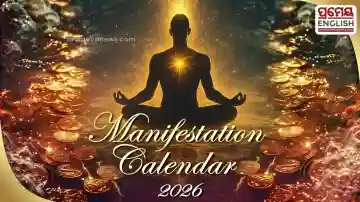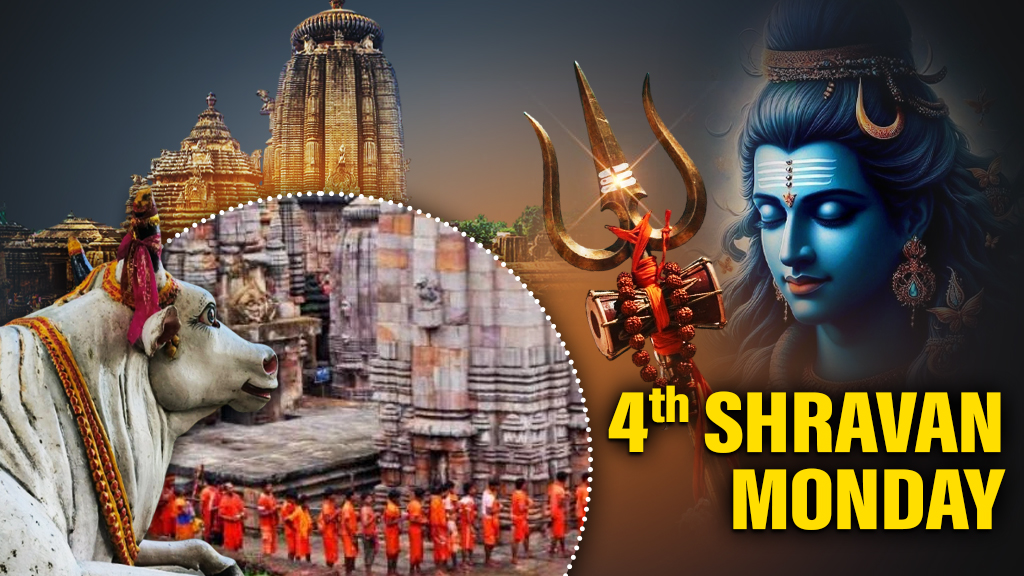

Bhubaneswar, Aug 4: On the last Monday of the holy Shravan month, thousands of devotees across India are observing fast and offering special prayers to Lord Shiva with deep devotion and spiritual discipline.
Known as "Shravan Somwar," Mondays during this sacred month hold immense religious significance, and today, August 4, marks the last of these auspicious days in 2025.
The month of Shravan, as per the Hindu lunar calendar, is dedicated to Lord Shiva and is considered one of the most favourable times to worship the deity. Devotees believe that observing fasts and performing rituals on Shravan Mondays pleases Lord Shiva and helps fulfil their wishes.
Significance of the last Shravan Monday:
The last Monday of Shravan is particularly special as it symbolises the completion of a month-long devotion to Lord Shiva. It is believed that sincere prayers on this day bring peace, prosperity, and spiritual upliftment. Many devotees also observe "Solah Somwar Vrat" which continues into the weeks ahead, but the culmination of Shravan Somwar is marked with heightened rituals and offerings.
Speaking to a local devotee in Bhubaneswar, 28-year-old Sangeeta Dash shared, “I have been fasting every Monday in Shravan. Today, being the last, is even more important to me. I woke up early, took a holy bath, and offered milk, honey, and bel leaves to the Shivlinga. I feel spiritually fulfilled.”
How to worship Lord Shiva on the last Shravan Monday:
1. Early Morning Bath: Devotees begin the day with a ritual bath, often in a river or with water mixed with Gangajal. Wearing clean and preferably white clothes is advised.
2. Visit to Shiva Temple: Temples see heavy footfall on this day. Devotees perform Abhishekam (ritual bathing of the Shivling) with water, milk, curd, honey, ghee, and sugar.
3. Offer Bel Patra and Datura: The trifoliate bel leaves are considered sacred and essential in Shiva worship. Datura flowers and fruits are also offered.
4. Chanting Mantras: Sacred mantras like "Om Namah Shivaya", Maha Mrityunjaya Mantra, and hymns from the Rudra Abhishek are chanted throughout the day.
5. Fasting: Many observe a full-day fast, consuming only fruits or a single meal after sunset. Some follow Nirjal Vrat (without water) as an extreme form of devotion.
6. Lighting a Diya and Offering Prasad: A ghee lamp is lit, and sweets like peda or fruits are offered as prasad.
Temples across cities like Varanasi, Haridwar, Ujjain, Bhubaneswar, and Puri have made elaborate arrangements for the last Shravan Somwar. Priests are conducting special Rudrabhishek and Maha Aarti in the evening. Devotees gather in large numbers, especially in prominent Shiva temples such as Lingaraj Temple in Bhubaneswar and Kedarnath in Uttarakhand.
Sumit Nayak, a temple priest at the Nilakantheswar temple remarked, “On the last Somwar, the energy is truly divine. People come with unwavering faith, and we conduct extended puja rituals to accommodate the large turnout.
As the sun sets on the final Monday of Shravan, the chants of "Har Har Mahadev" echo across temples and homes. The day is not only a religious observance but also a celebration of spiritual connection, discipline, and unwavering faith in Lord Shiva. Devotees believe that their prayers on this last Shravan Somwar will be heard and blessed by the benevolent deity.